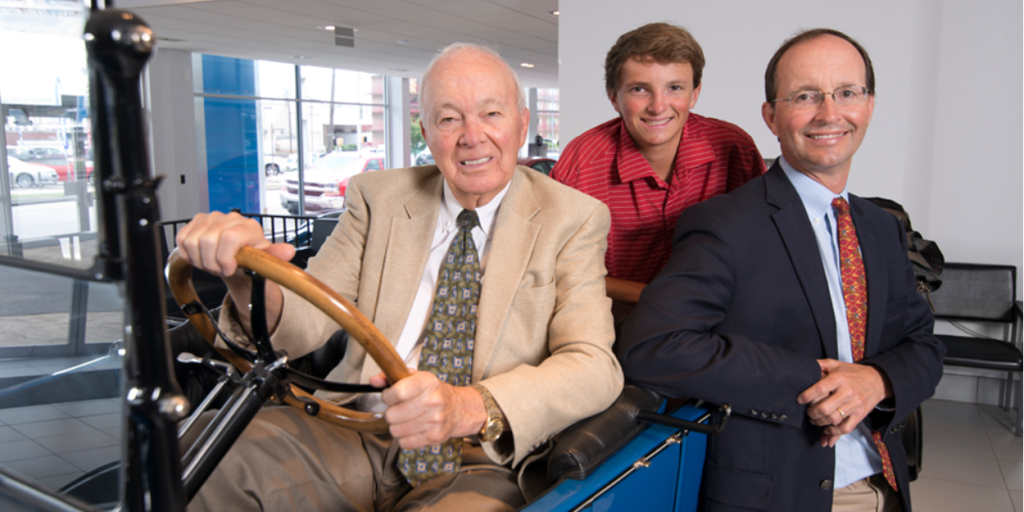In the summer of 1882, a man on horseback rode into Jones Valley, bound for the new city of Birmingham, which had been founded just more than a decade before. He entered the valley from the northeast, through Red Gap, a natural break in the Red Mountain Formation that contained the vast stores of iron ore that made the founding and growth of the city possible.
The man was William Henry Ruffner, a 58-year-old Virginian recently resigned as the first superintendent of that state’s public school system, which he had been largely responsible for creating in the aftermath of the Civil War. Returning to his first love of geology, Ruffner had been hired to survey the planned 400-mile route of the new Georgia Pacific Railroad from Atlanta to the Mississippi River. The route would pass through the emerging rail hub of Birmingham.
Riding through the gap on that summer day, Ruffner was captivated by the outcrops of red ore visibly interbedded with the mountain’s shales and sandstones. In his report to the Georgia Pacific the following year, he wrote that the seams of ore were “so durable as to constitute the backbone of Red Mountain, and so prominent as to be readily recognized by its debris where the railroads pass through Red Gap, six miles east of Birmingham.”
The city in which Ruffner arrived in 1882 was nothing short of a marvel. Founded in 1871 amid great hoopla over its mineral riches – nowhere else in the world were iron ore, coal and limestone, the primary ingredients of iron, found in such close abundance – Birmingham’s rapid growth earned it the nickname “The Magic City.” But a cholera epidemic in 1873, coupled with the impacts of a national financial panic that would be felt for the rest of the decade, almost wiped out the fledgling city. The appearance of its first coke-fueled iron furnaces in 1876 reignited Birmingham’s industrial development and by the late 1870s, the city began to grow again in earnest.
The Georgia Pacific would grow right along with Birmingham, becoming a key player in the city’s emergence as an industrial powerhouse and in the post-bellum development of the South. As it did, the railroad relied heavily on the observations and conclusions Ruffner offered. Among his most impactful recommendations was shifting by 8 miles the route originally planned for the railroad to optimize Georgia Pacific’s access to the vast Warrior Coal Field northwest of the city.
Over the course of roughly a year, Ruffner and his partner, a chemist and geologist named John L. Campbell, made three trips to Birmingham to complete their work. In the report to Georgia Pacific, Ruffner wrote of his initial encounter with “the celebrated Red Mountain” and its “famous fossil ores,” advising that readers “may be surprised at the magnitude and variety of the resources of this surprisingly favored region … but probably cannot be more so than we were upon first learning the facts.” Among the report’s conclusions was that Birmingham’s “material resources may be regarded as practically inexhaustible.”
As with nearly all privileged Southern men of the era, Ruffner’s undeniable accomplishments must be viewed in the context of his relation to the institution of slavery. His father, Henry, was a Presbyterian minister and college professor who ultimately became president of Washington College (now Washington and Lee University). Though a slaveholder himself, the elder Ruffner argued in favor of abolishing slavery gradually, on the grounds that maintaining it would bring about the economic stagnation and ruin of the South.
William Henry Ruffner earned his bachelor’s degree from Washington College in 1842 and his master’s degree from the same school three years later. For two of the years in between, he ran a salt mine owned by his family in what is now West Virginia. While there, he joined the American Colonization Society, an organization devoted to convincing slaveholders to relinquish their claims to those who agreed to be recolonized to the African nation of Liberia.
After receiving his master’s degree, William Henry Ruffner decided to become a minister. He studied theology first at Virginia’s Union Theological Seminary and then at Princeton University. Health problems forced him to withdraw from Princeton and return home to Virginia in 1847. After completing his studies and being ordained in 1848, Ruffner spent two years as chaplain of the University of Virginia before accepting the pastorate of the Seventh Presbyterian Church in Philadelphia.
Struck by another bout of ill health, Ruffner left Seventh Presbyterian in 1853, returning again to Virginia. There, he preached part-time, completed several books, contributed articles to scientific journals, indulged his love of geology, and continued to advocate for Black recolonization. He also ran a small farm, for which he leased four enslaved people and utilized the labor of six others held by his father-in-law. With the approach of the Civil War, Ruffner opposed Virginia’s secession, but ultimately remained loyal to the Confederacy and joined the local home guard.
When the war ended, Ruffner began what he considered the great work of his life. He was the acknowledged architect of Virginia’s public school system, of which he was appointed the first superintendent in 1869. Soon, Virginia was spending considerably more money per pupil – including both Black and white students – than any other state in the former Confederacy, earning national attention for its excellence.
Ruffner was devoted to educating both races but remained firmly committed to educating them separately (one current critical assessment holds that “his goal was to allow enough education for African-Americans that they would no longer find it necessary to want integration”). But even that was too much for increasingly reactionary Virginia politicians, who eventually termed Ruffner a “radical” and began to fight him at every turn. He resigned early in 1882 and, a few months later, accepted Georgia Pacific’s commission to survey its route westward through Birmingham.
After submitting his report to the railroad the following year, Ruffner became involved in creating a teacher training school for white women in Virginia, the State Female Normal School. He was appointed as the school’s first principal in 1884, serving one three-year term and declining another. He returned to his avocation of geology, traveling to locations as far away as what is now Washington state and writing extensively about his “geologizing” and other subjects. He also took on additional surveying commissions, including one in 1888 for Birmingham’s Sloss-Sheffield Steel and Iron.
William Henry Ruffner died in 1908, having lived long enough to see Birmingham fulfill the industrial promise he foresaw for it. In 1906, the ore mines on the mountain that rose north of Red Gap had been named the Ruffner Mines by their owner, Sloss-Sheffield. Sometime after his death – certainly by 1910, when the name appeared on maps for the first time – the mountain itself became known as Ruffner Mountain.
It was, and remains, a fitting tribute. From the time of his initial ride through Red Gap, Ruffner had seen what Birmingham might become. As he wrote in his 1883 report to the Georgia Pacific:
Twelve years ago, the site of this flourishing little city was an old cotton plantation. Now it claims a population of 12,000, and is rapidly growing. As to its future there can be but one opinion. It is destined to be the centre of iron industries in Alabama – in fact, such is its position already.
(Courtesy of Alabama NewsCenter)













